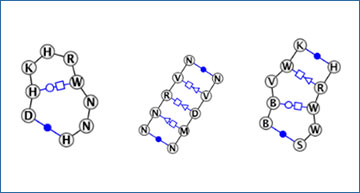Up to 75% of the human genome encodes RNAs. The function of many non-coding RNAs relies on their ability to fold into 3D structures. Specifically, nucleotides inside secondary structure loops form non-canonical base pairs that help stabilize complex local 3D structures. These RNA 3D motifs can promote specific interactions with other molecules or serve as catalytic sites.
McGill University researchers have developed PERFUMES, a computational pipeline to identify 3D motifs that can be associated with observable features. Given a set of RNA sequences with associated binary experimental measurements, PERFUMES searches for RNA 3D motifs using BayesPairing2 and extracts those that are over-represented in the set of positive sequences. It also conducts a thermodynamics analysis of the structural context that can support the interpretation of the predictions. The researchers illustrate PERFUMES’ usage on the SNRPA protein binding site, for which the tool retrieved both previously-known binder motifs and new ones.
Availability: PERFUMES is an open-source Python package. https://jwgitlab.cs.mcgill.ca/arnaud_chol/perfumes.
Chol A, Sarrazin-Gendron R, Lécuyer É, Blanchette M, Waldispühl J. (2024) PERFUMES: Pipeline to extract RNA FUnctional motifs and exposed structures. Bioinformatics [Epub ahead of print]. [abstract]





